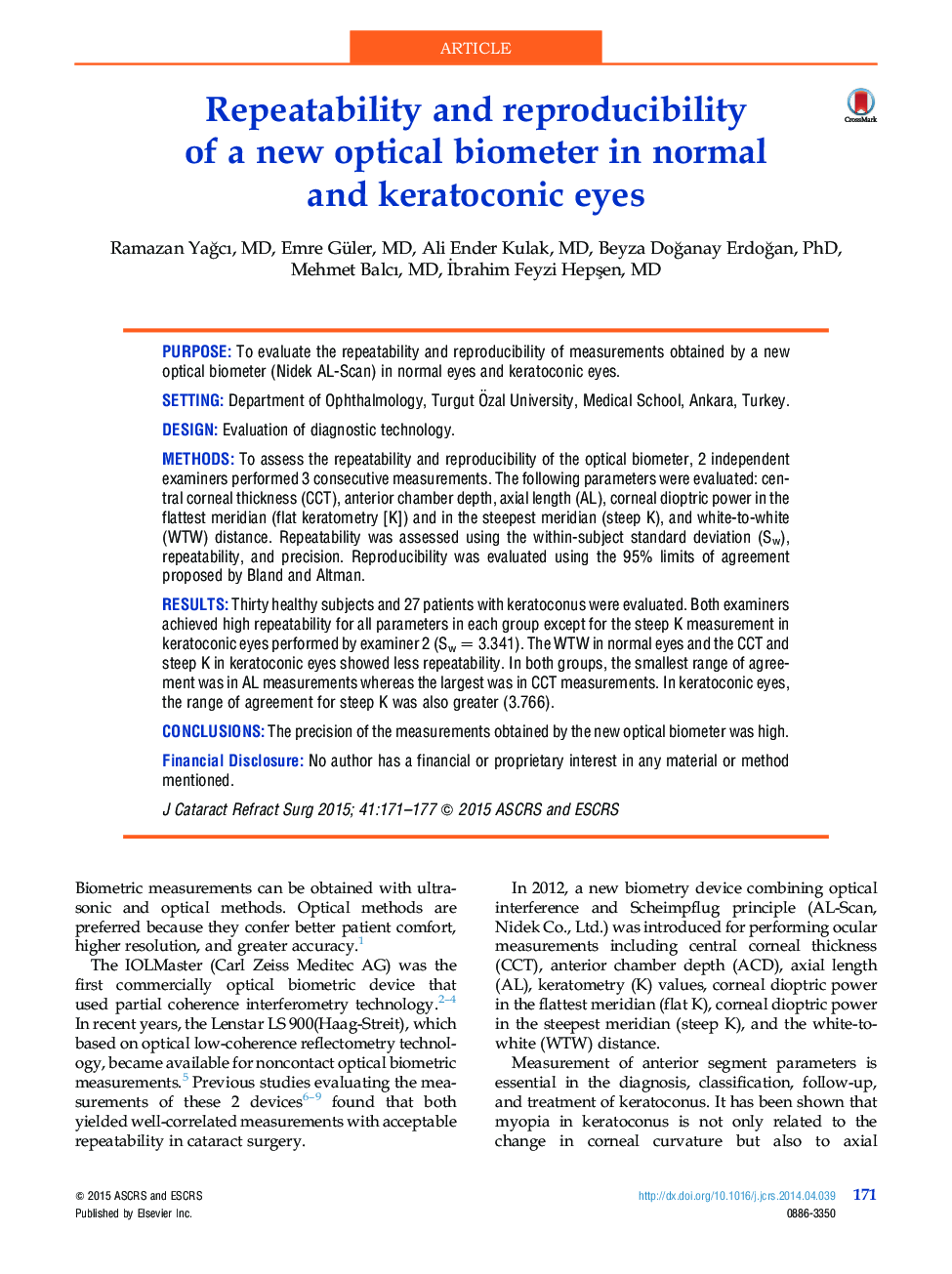| کد مقاله | کد نشریه | سال انتشار | مقاله انگلیسی | نسخه تمام متن |
|---|---|---|---|---|
| 4016331 | 1261945 | 2015 | 7 صفحه PDF | دانلود رایگان |
PurposeTo evaluate the repeatability and reproducibility of measurements obtained by a new optical biometer (Nidek AL-Scan) in normal eyes and keratoconic eyes.SettingDepartment of Ophthalmology, Turgut Özal University, Medical School, Ankara, Turkey.DesignEvaluation of diagnostic technology.MethodsTo assess the repeatability and reproducibility of the optical biometer, 2 independent examiners performed 3 consecutive measurements. The following parameters were evaluated: central corneal thickness (CCT), anterior chamber depth, axial length (AL), corneal dioptric power in the flattest meridian (flat keratometry [K]) and in the steepest meridian (steep K), and white-to-white (WTW) distance. Repeatability was assessed using the within-subject standard deviation (Sw), repeatability, and precision. Reproducibility was evaluated using the 95% limits of agreement proposed by Bland and Altman.ResultsThirty healthy subjects and 27 patients with keratoconus were evaluated. Both examiners achieved high repeatability for all parameters in each group except for the steep K measurement in keratoconic eyes performed by examiner 2 (Sw = 3.341). The WTW in normal eyes and the CCT and steep K in keratoconic eyes showed less repeatability. In both groups, the smallest range of agreement was in AL measurements whereas the largest was in CCT measurements. In keratoconic eyes, the range of agreement for steep K was also greater (3.766).ConclusionsThe precision of the measurements obtained by the new optical biometer was high.Financial DisclosureNo author has a financial or proprietary interest in any material or method mentioned.
Journal: Journal of Cataract & Refractive Surgery - Volume 41, Issue 1, January 2015, Pages 171–177
